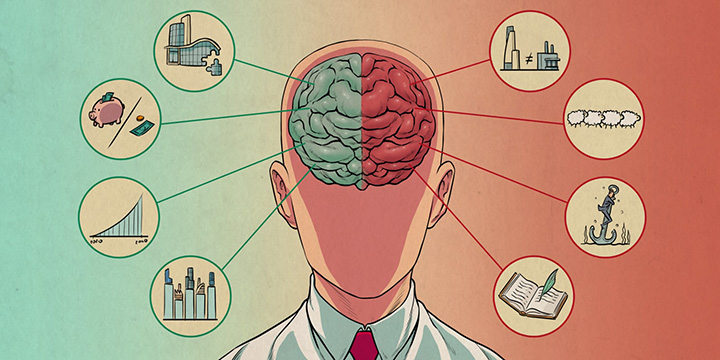The recent downturn in the markets, caused mainly by the COVID-19 pandemic, has caused a very rapid and significant correction. There probably hasn’t been this fast a stock market drop in history.
When negative catalysts arise (including crises, bubbles, pandemics, US-China trade wars or Brexit) they cause volatility in the markets, even intraday, as is the case at the moment. We have been able to observe this volatility in some of our shares in the Cobas portfolio. An example is that of International Seaways (INSW), a company in the maritime oil transport sector, whose price is reinforced thanks to the increase in the price of freight (rental price of a transport ship). Freight is volatile and its price is determined by supply and demand. The higher the freight price, the more cash the shipping companies generate and this has a positive impact on their share price. When there is high volatility, there are irrational movements in the markets.
These are difficult times for individual investors, since negative catalysts cause widespread downturns that decrease our savings. But before we get nervous we must take several factors into account:
- We are investing in real assets: By buying a share, we are acquiring a part of a company’s property. That is, we own a piece of it (factory, machinery, facilities, profits, etc.).
- We are investing unnecessary savings: When investing in equities, whether through an investment fund or at a private level, it is essential to invest money that is not needed in the short term.
- Time horizon: This is a key point. You have to have a long-term time horizon (the longer the better). We observe that the trend of the markets is bullish, but there are times of temporary corrections.
- Selection of companies: It is essential that there is a good selection of the companies comprising the portfolio. As you may already know, we select leading companies in their sector, companies with competitive advantages, family-owned companies, companies with net cash or little debt and that trade below their intrinsic value with a high safety margin.
If all of the above is clear, it will help us on our path as investors and we will be able to better withstand temporary downturns when a negative catalyst appears.
At Cobas AM, we do not see volatility as a risk, but rather as an opportunity offered by the market to obtain extraordinary future returns. If there were no volatility, we could not do Value Investing.
The market is efficient in the long term, but in the short term there are inefficiencies that we try to take advantage of thanks to that volatility.
In summary, when investing in equities you have to take into account several aspects and understand that there will be some temporary downturns, but sooner or later the market will recover.
I have recently completed the Executive Programme on Value Investing and Behavioural Finance, through the collaboration of Value School, INIV (Institute of Neuroeconomics and Value Investment) and ICADE.
The programme focuses on analysing value investing from many perspectives. The speakers are managers/analysts of the most prestigious mutual fund management firms in our country. Each speaker tells us their view of Value Investing and how they put it into practice in real life through presenting a current investment case they have in their portfolio. We also learn to understand the key points of each sector and how to analyse companies with different types of valuation methods.
Another fundamental part of the course is the analysis offered by INIV, which helps us understand the phases investors take throughout their investment path. The biases we have or those that may affect us at any given time. Something very important, especially in the current situation, is not to allow ourselves to be carried away by our emotions, since they can lead us to make wrong decisions. Cognitive biases are alterations that occur in our minds and cause us to have a distorted view of reality.
Some biases that can affect us when investing in equities are:
- Comparison: When we analyse a company, an investment or a fund, we always do so comparing it with another company, investment or fund; however, it may not always make sense to compare one with another because they are so different.
- Echo chamber: This consists of surrounding yourself with people who have the same thought. This bias can lead to a “herd effect”. It can lead us to make wrong investment decisions in times of downturns. Example: everyone is selling, I have to sell.
- Anchorage: We attach great importance to data and “anchor” ourselves to it. Example: This stock has gone up/down a lot.
- Narratives: We usually make up stories so that everything has a meaning. Example: this company’s share price has risen a lot, it has little profitability to offer.
- Availability: What we perceive more recently we tend to attach great importance to. Example: good/bad news about a company.
- Status quo: We think that everything is and will be the same. Example: this investment has not yielded good returns and this will continue to be the case.
There are more biases, since with them we try to study how we make decisions regarding investments or in another area. With them we try to understand human behaviour, and we cannot forget that we are all exposed to its influence to a greater or smaller extent. If you have found this interesting, I encourage you to research it.
For all those who like investing, Value Investing and would like to improve their knowledge in this subject, I recommend: the Executive Programme on Value Investing and Behavioural Finance.
Did you find this useful?
- |







